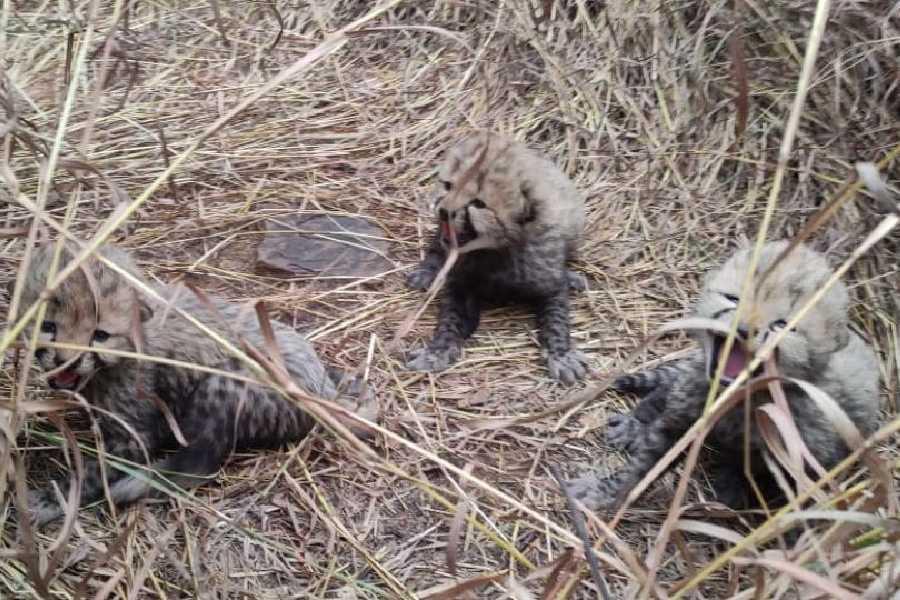A Namibian cheetah named Aasha in the Kuno National Park has given birth to three cubs, the Union environment ministry announced on Wednesday, their birth marking the second litter to emerge in India’s cheetah introduction programme.
“Purrs in the wild,” environment minister Bhupendra Yadav posted on X, formerly Twitter. “Thrilled to share that Kuno National Park has welcomed three new members. The cubs have been born to the Namibian cheetah Aasha.”
The post contained a video and a photograph of the cubs but did not specify who their father was nor whether the mating with Aasha had been “arranged” as the cheetah project had done in December 2022, leading to the first litter of four cubs in March 2023.
Yadav described the arrival of the three cubs as a “roaring success for project cheetah”, a long-term project initiated in 2022 to introduce clusters of cheetah populations in India’s wilderness.
The environment ministry had flown eight cheetahs from Namibia into Madhya Pradesh’s Kuno National Park in September 2022 — coinciding with Prime Minister Narendra Modi’s birthday — where Modi himself received the animals. India also imported 12 more cheetahs from South Africa in February 2023.
But six adults and three of the four cubs born in captivity in Kuno in March 2023 have died from various causes — the cub deaths linked to heat and dehydration and the deaths of at least two adults linked to maggot infestation and infections near their neck collars.
Cheetah project officials and experts guiding the project have asserted that they had anticipated some cheetah deaths which, while unfortunate, should not be viewed as a setback to the project’s long-term goals. The cheetah project document had defined even a 50 per cent cheetah mortality during the first year of introduction as a criterion for short-term success.
Wildlife biologists who are not associated with the cheetah project, however, view the long periods of captivity within fenced enclosures in Kuno that the cheetahs have had to endure as an indicator that the project is not proceeding as had been planned.
After at least two cheetahs had died from maggot infestation and infections in July 2023, wildlife authorities brought back some of the cheetahs already in the open wild back into the fenced enclosures. Some cheetahs have been released back into the wild, but have been brought back each time that they strayed beyond Kuno’s boundaries.
“If the cheetahs spend the majority of their time in captivity and are repeatedly captured, it prevents them from leading the life of a free-ranging wild cat,” said a wildlife biologist who requested not to be named. “Cats in captivity would have been appropriate if the objective was to establish a captive population for zoos or safari parks, not for wildlife conservation.”
The cheetah project’s long-term goal is to establish free-ranging and self-sustaining populations of wild cheetahs in the country to help conserve grasslands and other open natural ecosystems and their species such as the Great Indian bustard which are dependent on such habitats.










